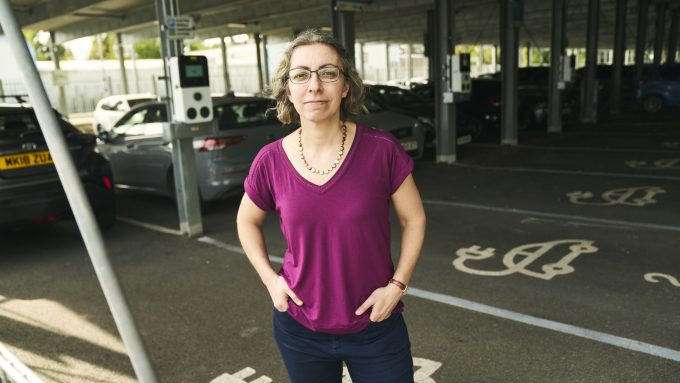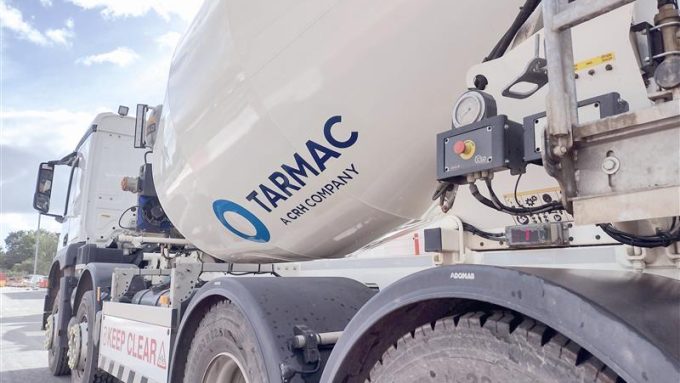
Meet the innovator enabling material reuse in construction

Passports are not just for holidaymakers jetting off abroad: in the built environment they are being used to track the origins, properties and likely life expectancy of materials used in construction.
One entrepreneur helping to expand and refine the use of data platforms for material passports in construction is Andrea Charlson, whose company Madaster UK recently took part in the sixth cohort of the HS2 Accelerator, led by Connected Places Catapult.
Madaster’s unique selling points are two-fold: its platform integrates with Building Information Management files to efficiently create the passports, and it provides a forecast of the residual value of materials in situ – useful when considering the cost and sustainability impact of reuse versus demolition and rebuild, when an asset is deemed expired.
“Data repositories can be used to inform decision making about the maintenance, replacement or upgrade of an asset throughout its life,” she says.
“Better information helps clients to adopt a circular economy approach with their buildings, consider reuse where possible, and reduce consumption of finite resources.”Andrea Charlson, Managing Director, Madaster UK
Andrea also spearheaded the introduction of a whole life carbon calculator for construction into the tool, and has forged a collaboration with consultant 540 World and the Cradle to Cradle Products Innovation Institute to promote ‘cradle to cradle’ materials.
The software was first used for a new commercial development in the City of London to create a materials passport during the building’s design stage and is now being updated to reflect its ‘as built’ status. “By the time the project is completed, we will have a valuable set of data, giving the building a much greater potential for reuse in the future,” she says.
Benefits of the Accelerator and Catapult
During the HS2 Accelerator, the company presented its platform to the rail client and contractors to demonstrate how it could be used to collate details about material used for temporary and permanent construction assets, to analyse the potential for future disassembly and reuse.
The HS2 Accelerator programme been great,” she says. “It allowed us to have open conversations with potential customers in a non-sales environment, and receive honest feedback.
“I’ve been helped by lots of mentors, assisting with different parts of the business, getting me to think about the company’s positioning and what I need to do next to scale.
“Connected Places Catapult also provided several networking opportunities which have led to ongoing conversations with people who do not just work in rail.”

Focusing in on material sustainability
Andrea started work as a structural engineer and pursued, in her words, a “meandering career, where I’ve taken risks”.
She developed an interest in sustainability at university and soon after graduating, pivoted from structural engineering towards specialising in sustainable materials. “I had to move house to a new city and take on a job in a field I didn’t know much about, but it was worthwhile because I had excellent mentors.
“Fifteen years ago, sustainability was only just becoming mainstream, and most of the focus was on energy use. I became fascinated by the idea of moving large blocks of concrete around after reading an article about the reuse of precast concrete panels in Germany.”Andrea Charlson, Managing Director, Madaster UK
She worked on a diverse range of projects, from super sustainable homes with brick manufacturer Wienerberger to low carbon route maps for industry with the Green Construction Board. She also developed internal guidance and calculators for assessing the embodied carbon of structures. “You cannot get to net zero by ignoring materials,” she adds.
An early interest in the environment
Andrea grew up in Bolton in Greater Manchester and remembers taking a keen interest in environmental matters as a child. Her parents instilled in her the importance of recycling household waste, and were early adopters of fitting energy saving lightbulbs.
Andrea and her family would collect aluminium cans, squash them and take them to a recycling bank, along with green and brown glass bottles.
Growing up, she was a fan of television programme Grand Designs – with its focus on innovation and the environment – and decided to study architectural engineering at Cardiff University. She then pursued a career in structural engineering, with Arup in the Welsh capital.
Ten years ago, she joined HS2 as a sustainable materials advisor, later manager, before becoming its sustainability manager developing environmental strategies. “I wanted to make a difference and to have a similar scale of impact as the learning legacy of building the London Olympics,” she said.
“We were setting up all the standards and requirements for the railway, and looking at how we would monitor and manage the use of sustainable materials,” she remembers.
“One initiative was around using lower carbon concrete, and we entered into collaborations with several cement and concrete companies and chemical specialists to increase awareness of the innovative solutions that were emerging to encourage their uptake on the project.”
It was in this role that Andrea’s interest in circularity as a key component of sustainability grew. She developed the project’s circularity ambitions and requirements, and led a number of initiatives including writing a circularity brief for one of the depots, and producing a ‘hierarchy of beneficial reuse’ for timber.
“It wasn’t possible to see the impact I was having at the time, but I have since heard stories from small circular businesses that have managed to flourish because of an initiative I had put in place.”

Andrea then went to focus on circularity full-time, joining ReLondon, a collaborative partnership helping London transition to a low carbon, circular city to lead on their circular built environment research and demonstrator projects.
Based on this experience, she launched Madaster UK in 2023, an offshoot of a parent company based in the Netherlands.
A growing appreciation of circularity
Understanding of the need to reduce carbon is in full flow, and circularity is seen as a key part of this, she adds. “The circular economy wave is definitely building, and materials passports are becoming more common.” She says she looks forward to a day, when such passports are just another item asked for by clients in a construction brief.
Andrea advises other entrepreneurs to “keep positive, celebrate small successes and continue looking for opportunities, otherwise your work will seem like an uphill battle without much reward”.
To the wider industry she says: “Experiment more, test more solutions, and don't be worried of failing.”
Keep up to date with the progress of companies taking part in cohort seven of the HS2 Accelerator. View the Madaster UK platform here. Read about the achievements of Hypervine, another of the HS2 Accelerator alumni.





